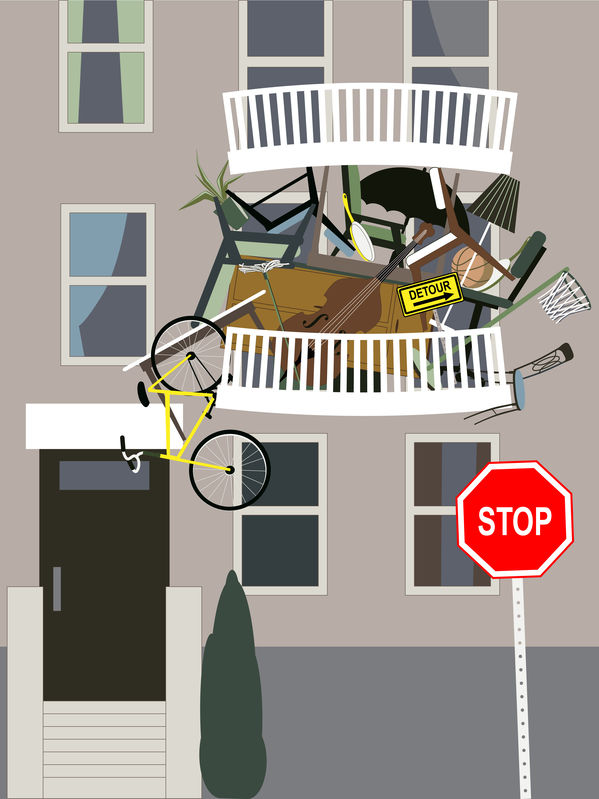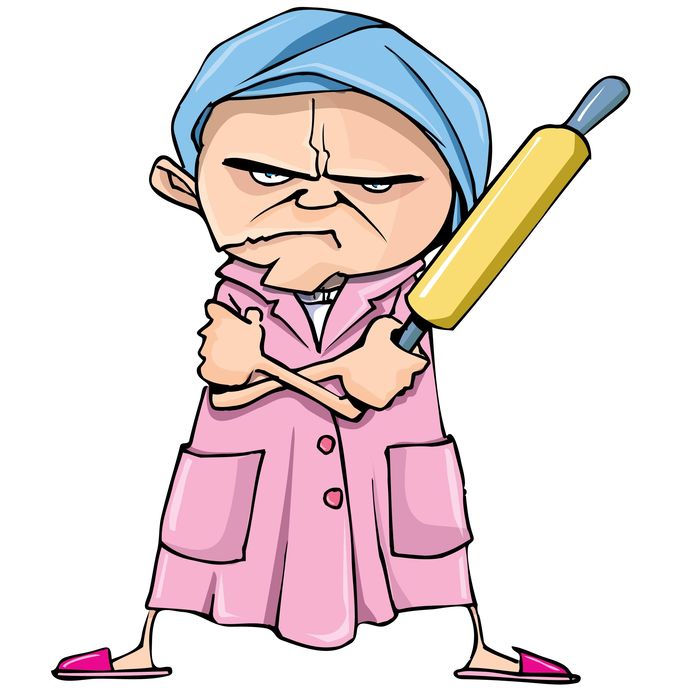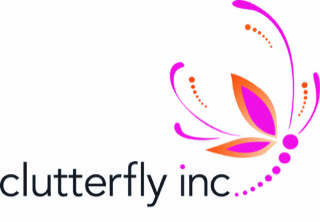Halloween has come and gone – perhaps even the candy, too. And while there may be a few homes on your street with their spooky decorations still out on display, is there also a house that looks scary all year round? Maybe the drapes are closed in the front window but there is stuff piled up between the curtains and the glass. Is the front or backyard looking neglected with junk sitting there for months or years? Do kids on the street talk about the mysterious hoarder a few houses down from you?

Regardless of whether you’re living downtown or in the suburbs, even in one of the wealthiest postal codes in the country, hoarding behaviours is something that can affect anyone. It’s something that can be a lifelong battle or magnified by a stressor such as a divorce, death of a pet or loss of a loved one.
Are there signs of hoarding on your street? Is there a house with a couple of patio chairs and a few kids’ toys? Or is it littered with garbage, such as stacks of old newspapers, tied up plastic bags, piles of take-out containers and almost ritualistically lined up rows of paper coffee cups? These can be important clues.

Another way to confirm hoarding behaviours is to keep an eye out for what’s on their yard both before and after garbage day. If pretty much everything is still put on their porch, yard or side walkway, the day after, there likely is a genuine problem. Plus, if there is an ever-growing accumulation of stuff out on the front yard for all to see, it’s most likely a reflection of the state of things inside the home, too. In fact, it’s likely things are even worse inside.
Did you know? The percent of the population with hoarding behaviours is around 5%! That is almost triple the rate of Alzheimer’s and double the rate of domestic abuse cases!
So, should you mind your own business or speak up? As much as it’s not your home, there’s the matter of personal safety to consider for your neighbour, and their immediate neighbours if they live in a semi-detached home, town house or apartment/condo. At the very least, there needs to be clear, easy and safe access for first responders, including fire fighters and paramedics to enter the home – whether rescuing someone from a fall, medical emergency or house fire.
Consider these two options:
1. Talk to your neighbour. If you often speak with your neighbour, subtly mention that you’ve noticed there’s a lot of stuff on their porch or yard and that if there’s anyway you can help, you’re there for them. If you know that they recently lost their spouse or even their dog, mention that you know they’re grieving and that you care. Perhaps they merely need help physically lifting things and carrying them to the curb. If you’re not up to the task of helping them, mention that you can connect them with an amazing woman – me! – who specializes in clearing heavy clutter. I do, however, advise that you avoid or refrain from using the word hoarder. This can be a painful label to apply to someone. If your neighbour is defensive and won’t let you help and you suspect that they are living in a dangerous environment, then you may have to go to option 2.

2. Call 311. If you are concerned about a high fire hazard risk or pest infestation, and you can’t speak directly with your neighbour and you live in Toronto, call 311. They can redirect your call, collect basic information – be sure to have your neighbour’s street number handy. Even if they ask you for your name, address, etc., your tip will remain anonymous. A by-law officer will be assigned to investigate the situation and, if necessary, order specific tasks to be completed within a set timeframe. Keep in mind, this process can be very slow. It may be months before you notice any change. Option #1 is a better way to go though. Try to talk to them first before taking stronger measures. Option 2 can be traumatizing for the person with hoarding behaviours.
Did you know? Hoarding Disorder often has a genetic link and can begin during childhood and worsen with time. For example, how a child deals with their Halloween treats can be very telling. Do they save all the candy? Have they created a spot to hide it away, instead of eating a few sweets at a time? This may be an early sign of hoarding behaviour and the sooner it’s addressed, including the cause(s), the better. If you’re concerned that your child may be demonstrating early signs of hoarding behaviours, let’s talk!
My Clutterfly journey began almost 4 years ago, taking courses and earning certificates to increase my knowledge to better serve my clients. As a professional organizer, I recently earned my CPO-CD® designation from Institute for Challenging Disorganization. I am now a Certified Professional Organizer in Chronic Disorganization – 1 of only 8 in Canada! Also, I’ve just returned from an intensive Hoarding Workshop in Boston that provided me with excellent training on how to work compassionately with people who struggle to let go of their possessions.

Please give me a call at 416-892-5919 or email me at kim@clutterflyinc.com and let’s discuss how I can help your neighbour transform their home into a safe and healthy space. Let’s get to work on their front yard while it’s still warm enough to work outside. Then we can move our efforts inside to help them enjoy the holidays at home.
Kim, CPO-CD®

